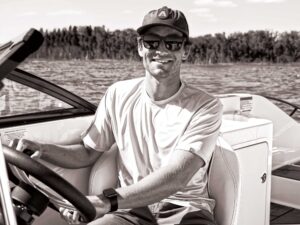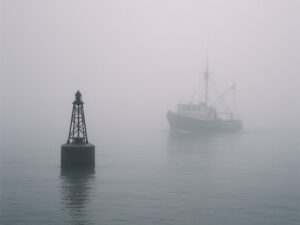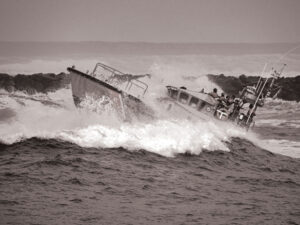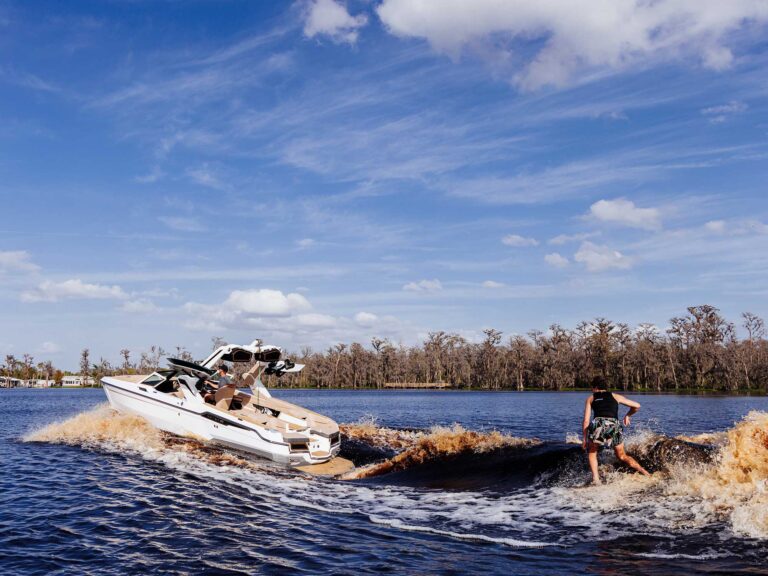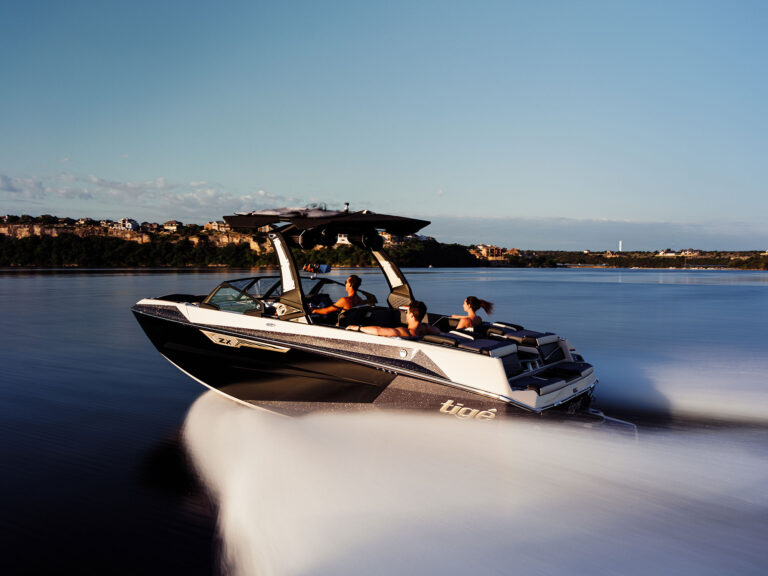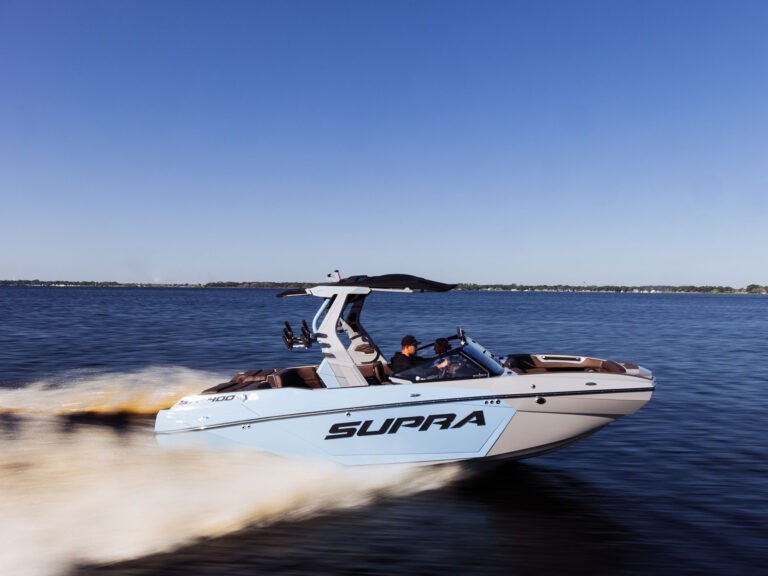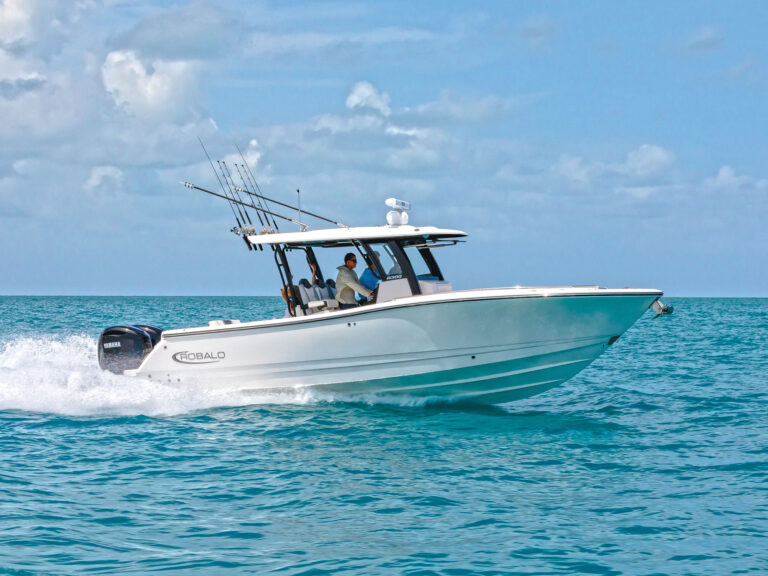Tim Horton loves to fish. And he’s good at it. Good enough to turn pro by his mid-20s and become one of the stars of the Bassmaster circuit. Now, this fair-haired Alabama native is living the dream, complete with a television show, endorsement deals, tournament winnings … and a whole lot of driving.
“Sometimes, it seems like I’m just a glorified truck driver,” he says.
As a pro angler, he follows the tournament trail nearly nine months of the year, from Florida to New York to California. He racks up some 30,000 and 40,000 miles in the process, all of them with a boat in tow.
Log that sort of mileage for the better part of a decade, and you’re bound to learn a few tricks to make towing easier. So when we caught up with Tim between tournaments, we didn’t beg for his fishing secrets (well, maybe a few). Instead, we got him talking about trucks and trailers.
Before You Go
Early departures are the norm for bass fishermen, and 5 a.m. is no time to discover that the trailer has a flat or a brake light is out. Tim rarely has such problems, because he always does routine maintenance and faithfully follows a pretrip inspection. He makes sure the trailer bunks are adjusted for optimum support and weight distribution of the hull. Proper tongue weight is equally important, and on most trailers this can be fine-tuned by moving the front stop forward or back a few inches. “Another thing some people overlook is the actual hitch ball,” Tim says. “They’ll use the same one forever.” With time, even this hard metal ball will wear down, creating a loose connection between ball and coupler. “You might think about getting a new one after a few years.”
Before the keys go in the Toyota Tundra’s ignition in the morning, Tim spends a couple minutes working his way from hitch to transom. Safety cables attached? Check. Straps in place? Yep. Lights working? We all know the drill, but many of us get in a hurry and aren’t as diligent as we should be. That’s when problems start to creep in – and remember, nobody is more strapped for time than a pro angler.
Trailer maintenance is not a “sometimes” thing, and that attention should include the tires. “You can’t take your trailer tires for granted,” he says. “I have mine rotated and balanced every 10,000 miles, and it can really make a difference in keeping the trailer from swaying and pulling rough.”
Tire pressure is equally important. A lot of experts will tell you that tire pressure is key not only for good running performance, but also important for bearing life. If one tire in a dual-axle pair is low, more weight will be shifted to the other wheel, which can cause undue stress on wheel bearings and lug nuts. Tim uses his tire gauge on a daily basis and carries a 12-volt compressor so he doesn’t have to depend on gas-station air hoses – which can’t always be found when you need them.
Wheel bearings have long been the bane of trailer boaters, but Tim hasn’t had a burned bearing in years. This is partly due to his switch from grease to oil-filled bearings. Mostly it’s the same attention to detail he uses to check lights, cables, connections and running hardware.
In truth, he has an easier time of it than most of us. When building a new home several years ago, he added a large pull-through garage bay, with doors at both ends, and a circular driveway running right on through. This allows Tim to pull the entire rig inside, unload and reload gear with immediate access to everything, and then simply drive out the front the following morning, en route to his next stop.
On the Road Again
Knock on wood, Tim’s never had an accident or even a serious problem while towing – just a few flat tires. The most likely reason for his flawless record isn’t luck; it’s a combination of attitude and execution.
“Road awareness is key,” he says. “I spend so much time towing that I’m always thinking of what the trailer’s doing. I find myself swinging wide and leaving more following distance even when I’m not towing something.”
Upbeat and easygoing, Tim doesn’t get flustered or take chances behind the wheel. While some drivers would rely on audio books, blaring music or long cell-phone or CB conversations to wile away the road miles, Tim likes to keep the distractions to a minimum.
“I try to stay off the phone in heavy traffic or on city streets,” he says. “If someone calls, I usually try to keep it short and call the person back later.” That’s exactly what he did when we called leading up to our visit. Numerous studies have shown that driving while on the phone can impair a driver’s concentration – almost as much as driving under the influence.
“Lane changes are one of your most dangerous maneuvers,” he says, “so it’s important to signal your intentions early and leave plenty of room.”
Tim uses his mirrors a lot, and makes sure they’re adjusted for the best possible view. “It’s important to be aware of what’s behind you and around you. This is easier with dual mirrors. Set the larger [top] mirrors for the long view behind, then position the smaller inset mirrors to see into the blind spot between your cab and rear wheels.” In addition to checking all the mirrors, Tim says he also takes a quick glance out both left and right windows before making a turn or lane change. He’s as patient as they come.
Intersections are another place where, for a man on the move, he takes a surprising amount of time. “With a right turn, the worst you’ll probably do is hop the curb,” he says. “Cut a left turn too tight, and you could take out a car. Sometimes, you just have to wait for a car to move, or give them the go-ahead. Even if you have to wait for the next light, it’s better than taking chances.”
Busy gas stations present similar challenges, as there are drivers pulling out at all angles, often without paying attention to their surroundings. “I choose my gas stations and sometimes even my motels based on entry and pull-through space,” he says. “It’s better not to back up if you can help it.”
Gas-station survival involves swinging wide, going slow, looking around and being ready to give a short, friendly tap on the horn if need be. You can also make your life easier, Tim says, by finding stations on the right-hand side of the road. One more thing: “While the tank is filling, I always walk around to check the tires, feel the bearings and test the straps and cables.”
Take a Load Off
Tim figures he launches his boat well over 200 times a year – often in the heavy ramp traffic and time constraints of a tournament. At such times, it pays to have an efficient routine.
“Before backing up, I always get out of the truck and look around,” he says. “This gives me a good mental picture of how the lanes and ramp are laid out.”
Like a pro truck driver, Tim backs with his mirrors. This wasn’t always the case, he admits. “I used to crane my neck around and look backward, but my last few trucks have had toppers, so I had to learn to work with just the mirrors.”
Tim has developed his own technique for keeping a trailer in line: He places his hand on the top of the steering wheel, and watches the mirrors. “When you see the trailer wheels creeping into a mirror, move your hand toward that mirror until the trailer disappears, or gets back to an even position with the other mirror. Use little back-and-forth moves as need be to keep the trailer out of [or balanced in] both mirrors, and you’ll back straight every time.”
We were hoping Tim had a similar trick for hooking up a trailer solo, but he admits he always did it by trial and error, like everyone else. These days, he uses a backup camera, which is mounted into the tailgate of his Toyota Tundra.
Like most all of us, Tim admits he’s launched without the drain plug a few times. “Any more, unless I’m running in heavy rain, I just keep the plug in place, and remove it temporarily to drain the boat,” he says. “What I do forget sometimes is to unhook the transom straps.”
When fast launches are required at tournaments, Tim and his fellow BASS anglers typically do what is known as a “float off.” With all straps removed (and the plug in place), he backs the trailer into the water until the boat begins to float, then brakes and pulls forward, allowing the backward momentum to carry the boat away from the ramp.
When operating solo at tournament time, it’s not uncommon to see a number of anglers float off their driverless boat, park and then have another participant provide a ferry ride. Probably not a technique you’d want to try at home, but add a boat driver to the equation, and it becomes a fast, efficient way for two people to clear the ramp. (This technique might not be advised on steeper ramps, where you might want to wait and unhook the bow right at the edge of the water, then back the final couple of feet.) Make sure the tow vehicle’s gas tank isn’t near empty when launching on a steeper ramp. Fuel pickups are generally located in the front of the tank, and if your vehicle is on an incline, it might stall out as the fuel runs to the back of the tank.
Ultimately, towing a boat relies mostly on common sense and a head’s up attitude. Maintenance. Inspections. Patience. Adjustments. If a pro angler in perpetual motion can take the time for this, imagine what it would do for recreational boaters like us on the occasional road trip.
The Tim Horton Story
Back in college, Tim Horton divided his time between his studies and fishing. And while his formal education has certainly contributed to his success, it was the time on the water that launched his career.
He made a grand entry into the pro-fishing ranks in 2000 by earning not only Rookie of the Year honors, but also the coveted Bassmaster Angler of the Year. He remains the only pro ever to hold both titles consecutively.
In the years since, Tim, now 35, has racked up more than $900,000 in tournament winnings, qualified for the Bassmaster Classic each of the past seven years and attracted the sport’s A-list sponsors. As part of the sponsorship and merchandising game, his name, signature and distinctive No. 1 logo has shown up on everything from lures and T-shirts to DVDs. You might call it Tim Horton Inc. – except there’s already a company by that name.
Anyone who has traveled into Canada will likely recall the popular chain of doughnut shops that also uses the Tim Horton moniker. They’re everywhere along the highways. A couple of years ago, lawyers for the doughnut-making Tim Hortons (founded by a professional hockey player) contacted the fishing Horton with a request: Stop using the name.
At first, Tim, the fisherman, thought it was a joke. When he discovered it wasn’t, he solved the dilemma in the same candid, disarming manner that seems to characterize his approach to life.
“The attorneys were going back and forth, so I called the folks at the company directly,” he says. “When I explained things, they said: ‘That’s crazy. We don’t care if you sell lures or whatever, so long as you don’t open a restaurant.’ They turned out to be real nice folks.”
This Tim Horton has a website: timmyhorton.com – perhaps his one concession to the overlap. “I was called Timmy all through school,” he says, “and I still answer to it.”
Lightening the Burden
Boat Buckle Transom Tie-Downs
It seems everyone has a personal system for transom tie-down straps. These Boat Buckles make the process more intuitive. They’re self-retracting, making them a favorite with tournament anglers. The new G2 model provides a 5,000-pound-per-pair holding capacity and one-handed operation. Essentials: $59.99, boatersworld.com
Dowco Custom Boat Cover
Owners of fishing boats have been gravitating toward Dowco’s custom covers because they can be ordered with straps, snaps or a patented ratchet fastening system – the buyer chooses. The covers can be used while trailering or for protection in storage. Essentials: $300 and up, dowcomarine.com
Equal-i-zer Hitch
A godsend on really heavy trailers, the Equal-i-zer Sway Control Hitch also takes the sway, bounce and sag out of midsize rigs. By distributing the load more evenly over the vehicle’s entire frame, these hitches keep the tail from dragging and stabilize the tow. It’s a good tool for any rig that’s taxing more than half the vehicle’s rated towing capacity. Essentials: $664 (10,000-pound rating), equalizerhitch.com
McGard Wheel Locks
What sort of person would steal a propeller or trailer tire? We have to ask because it’s so common. McGard makes locking lug nuts for wheels and spares, as well as a line of prop, outdrive and outboard locks that help keep the hardware where it belongs. Essentials: $19-$75, westmarine.com, mcgard.com
DuraSafe Receiver/Coupler Lock Set
Another thief thwarter. A single key fits both Durasafe’s Universal Receiver Lock and Universal Coupler Lock. Made from anodized aluminum and stainless steel, these locks are designed to fit basically every receiver on the market. Essentials: $35.49, durasafe-usa.com
Kodiak XL Pro Lube Kit
Hot, greasy trailer hubs happen over a long haul. Highway truckers have converted to oil. Kodiak’s XL Pro Lube Kit works with existing trailer bearings, converting the standard grease hubs to an oil-bath bearing lube system. The bearings will run cooler and last longer, with less friction. The XL Pro is easy to install and guaranteed not to leak. Essentials: $49.99, kodiaktrailer.com
DuraSafe Couple-Mate
This tool simplifies hookups when you’re solo. Just set the Couple-Mate into its mounting bracket and as you back up, the stainless-steel wings will guide the trailer tongue right over the hitch. The steel guide wing also doubles as a wheel chock. Essentials: $41.99, durasafe-usa.com
5 Best Tips on Tows
After several hundred thousand miles on the road, Tim Horton says these are his top tips:
Go Topless
Tim leaves his boat cover off when towing. In addition to reducing drag, it helps protect the boat’s finish from the abrasive friction that even a tight-fitting cover will cause at speed.
Develop a Zone Defense
If your vehicle doesn’t have wide-angle insert mirrors, consider investing in an add-on pair. Set these inset mirrors to cover your traditional blind spots, but always look out the windows before changing directions.
Right Thinking Delivery
Drivers plan their routes based on right turns. If a left is necessary but questionable, consider “boxing” a series of rights, or find another way to turn and return.
Signal Your Intentions Engage
Turn signals well ahead of a turn or lane change, and start braking early by tapping the pedal a few times to get other drivers’ attention.
Routine Performance Develop
Standard pretrip- and midtrip-inspection routines. This will help ensure nothing is overlooked.

